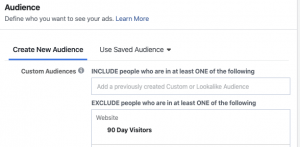Columnist Scott Vaughan takes a look at the transformation of media companies and what it means for B2B marketers and their data solutions.

For B2B demand marketers, media has until recently been synonymous with impressions, maybe clicks and hopefully, leads. Historically, marketing pros have turned to media companies to generate awareness and create demand. The focus over the last several years, however, has shifted to: “Impressions are a bonus; I expect leads.”
Moreover, the definition of a lead and how it’s generated varies widely. Leads are good, especially when they engage with your brand(ed) content.
Well, the bar and expectations are being reset. The next evolution is being driven by B2B marketers’ mandate for driving a predictable sales pipeline and media companies’ need to transform their business and value prop. If these two groups can work together, this formula is good for both parties.
Let’s take a deeper look at how media companies are changing and what this means for B2B marketers’ need for rich, actionable prospect data to create a pipeline.
Media companies are changing… and they’re changing fast
Technological developments in the ways audiences engage content and how media companies track that engagement have had an unintended result: Media companies are sitting on treasure troves of insightful data. Key phrase: sitting on it. That is changing.
Think about it this way: A larger B2B-focused media company may generate millions of engagements and leads annually, all of which remain in the company’s database long after being sent to the marketer. Now on top of the static lead/contact info itself, think of all the added insights aggregated through the analysis of this data:
- surging contextual content that illustrates interest in specific topics among individual leads (e.g., the number of white paper downloads in a set period of time);
- actions that signal info consumption preferences;
- industry trends (e.g., sudden bump in, say, cloud computing interest among enterprise companies); and
- changes in account info (e.g., human capital jumps between companies).
All metadata such as this has value… a great deal of value. And the smart media companies are rightly set on monetizing it.
The future of media is full-funnel data support
The major takeaway here is that media companies are no longer chained to top-funnel activities. The metadata they collect is valuable to the entire customer life cycle.
For example, you may be buying top-funnel leads from a publisher via a content syndication campaign, but what if that publisher can also cast insights on the level of account interest based on how many individual contacts at that company are downloading relevant content, and how often? It’ll certainly help you prioritize lead nurturing and sales follow-up.
Or imagine this: continuous database revisions based on title or company changes among known contacts. Media companies have this information because they’re on the front line of audience engagement, and they’re tracking every interaction.
What should demand marketers do to take advantage?
First, marketers (including me) must stop thinking of media companies as little island fishermen, removed from the marketing mainland, who ship us a weekly catch of leads files. The quicker you revise your understanding from media vendor or publisher to “data partner,” the better off you and your organization will be.
Second, marketers need to perform media partner audits. Talk to your publisher contacts and ask them what type of data solutions are in the works (or are already available). You’ll be surprised what you find.
Obviously, not all solutions will be relevant to your needs, but keep an open mind and think full-funnel; for example, are they offering any data appending services, surging lead interest info and so on?
Third, it’ll make a lot of sense to begin illustrating data providers within your marketing tech stack. This will help you organize your data flows so that you can both streamline processes and ensure you’re pulling all the insights you can from the data available. Again, this will gradually become easier as data providers begin to rebrand their offerings and highlight the technologies they’re using to supply the data.
Data’s role in demand orchestration
B2B marketing is entering a new phase, one that goes beyond simply generating demand and focuses on coordinating all the people, processes, technology and data sources so that the whole is much more valuable than the sum of its parts.
The transformation of media companies to whole-funnel data supporters will become pivotal in this move toward demand orchestration. The sooner you evolve your thinking to fully include such data partners within your marketing ecosystem, the sooner you’ll see that spike in your pipeline, customers and revenue.
Some opinions expressed in this article may be those of a guest author and not necessarily Marketing Land. Staff authors are listed here.
Marketing Land – Internet Marketing News, Strategies & Tips
(61)
Report Post





